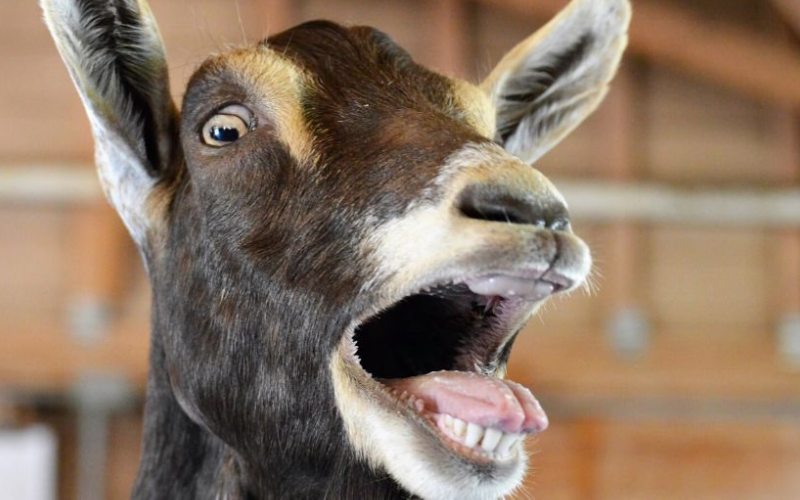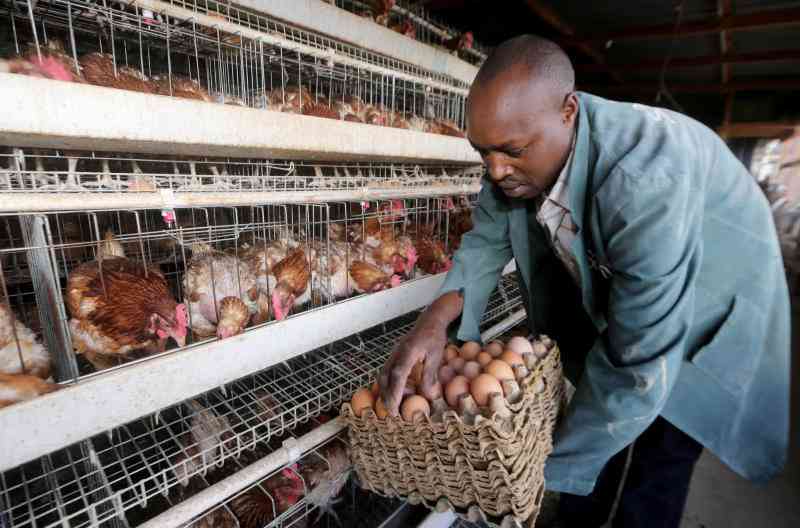
Dear Daktari I keep goats and sheep in my farm in Koriema, Baringo County. I normally let them graze freely in my ranch assisted by my boys and herding dogs. I have observed with a lot of concern my sheep and goats coming down with a disease that makes them to move in circles before, refuse to eat and finally die. Quite a number over the years have suffered this disease and I have seen the same with my fellow farmers’ animals. Locals call it Kibiywo which loosely translates to madness. What exactly is this disease, can it be treated or prevented?
[Leonard Kimaiyo]
Thank you Kimaiyo for the question and most importantly for reading The Smart Harvest. From the brief description, it sounds like you are talking about Celebral Ceonurosis although there are still many other conditions that present with the same clinical signs. But with your location and herding systems, it is most likely Celebral Ceonurosis.
What is Celebral Ceonurosis?
Celebral Ceonurosis also known as gid or sturdy is disease that commonly affects goats and sheep. It is caused by a larval stage of a certain tapeworm (Taenia Multiceps) that infests the central nervous system especially the brain of sheep and goats. Its definitive host is the dog and farming systems that have herd dogs that have access to carcasses or offals. The disease therefore is relatively common in the pastoral communities of Kenya and thus the local names given to it. That the Kalenjins call it Kibiywo and Maasai call it Ormilo a pointer to its high prevalence. Unfortunately, the disease management knowledge is relatively low among these communities resulting in avoidable economic losses. The disease is also zoonotic and can affect human beings though in rare cases.
Celebral Ceonurosis is a fairly common disease in goat and sheep in certain geographical areas that have a grazing system the bring shoats in close contact with dogs which are the main intermediate hosts of the causative tapeworm. The disease affects the nervous system and is caused by larval stages of tapeworm. Dogs, foxes and jackals acts as definative hosts where the adults mature in the small intestines and are shed through feaces. The tapeworm eggs contaminate pastures and waters from where sheep and goats pick up the eggs. Once picked up the larval stage migrates to the brain in the form of a fluid -filled cyst and cause the disease. At this moment the clinical signs are visible in shoats.
Clinical Signs
Clinical signs will normally be observed after ten days after the ingestion of tapeworm eggs. Initially the animal will develop a fever and slight nervous signs like restlessness, head tilting. As the disease progresses the affected animal will isolate itself from others then depression, blindness, moving in circles and incoordination in movement, neck rigidity, paralysis, recumbency and death will follow.
Control and Prevention of Coenurosis
The control of this disease is best done at the intermediate host by deworming dogs preferably after every three months and preventing their access to sheep and cattle carcasses and not feeding dogs on uncooked meat. Farmers should properly dispose sheep and goat carcasses to avoid dogs accessing and eating them. Sensitisation of farmers on this disease and its prevention is also important.
[Dr Othieno is a veterinary surgeon and the head of communications at the Food and Agriculture Organisation of the United Nations (FAO) Kenya. The views expressed here are not necessarily those of FAO]
Want to get latest farming tips and videos?
Join Us
 The Standard Group Plc is a multi-media organization
with investments in media platforms spanning newspaper print operations,
television, radio broadcasting, digital and online services. The Standard Group
is recognized as a leading multi-media house in Kenya with a key influence in
matters of national and international interest.
The Standard Group Plc is a multi-media organization
with investments in media platforms spanning newspaper print operations,
television, radio broadcasting, digital and online services. The Standard Group
is recognized as a leading multi-media house in Kenya with a key influence in
matters of national and international interest.
 The Standard Group Plc is a multi-media organization
with investments in media platforms spanning newspaper print operations,
television, radio broadcasting, digital and online services. The Standard Group
is recognized as a leading multi-media house in Kenya with a key influence in
matters of national and international interest.
The Standard Group Plc is a multi-media organization
with investments in media platforms spanning newspaper print operations,
television, radio broadcasting, digital and online services. The Standard Group
is recognized as a leading multi-media house in Kenya with a key influence in
matters of national and international interest.








